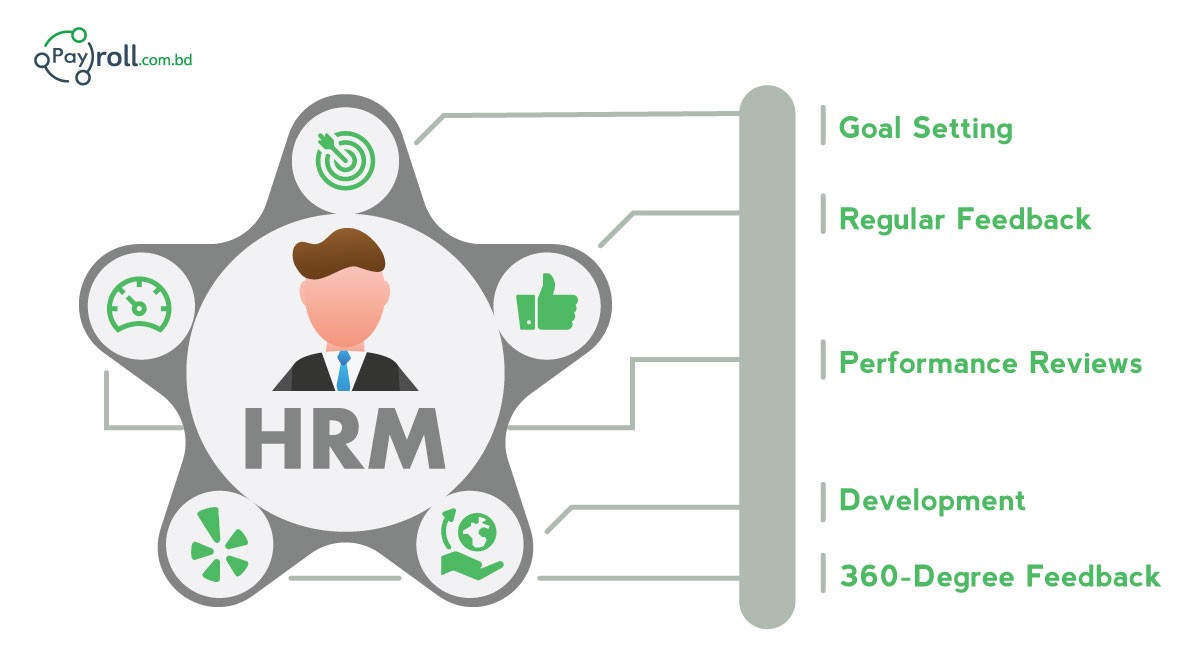In the dynamic landscape of contemporary business, the importance of a remote business address cannot…

How Can Human Resource Management Implement An Effective Performance Management System?
Implementing an effective performance management system is crucial for Human Resource Management (HRM) to enhance employee productivity and organizational success. The key steps to achieve this involve a strategic approach.
HRM should begin by setting clear and measurable performance goals that align with the organization’s objectives. These goals provide employees with a clear direction and purpose, fostering their engagement and motivation.
Regular communication between managers and employees is vital. Establishing open channels for feedback and discussions enables ongoing performance conversations, helping employees understand their strengths and areas for improvement.
HRM can implement an effective performance management system by establishing clear goals, fostering communication, ensuring fairness, providing development opportunities, conducting regular reviews, and being open to improvements.
Let’s discuss the details about effective performance management……!
How Does HRM Influence Performance Management?
HRM is responsible for designing, implementing, and overseeing the processes and practices that drive employee performance, development, and alignment with organizational goals. Here’s how HRM influences performance management:
- Designing Performance Management Processes: HRM is responsible for designing and developing the performance management processes and establishing guidelines for goal setting and feedback.
- Setting Performance Expectations: HRM collaborates with department heads and managers to establish clear and measurable performance expectations for employees. This involves defining job roles and performance criteria that align with the organization’s goals.
- Providing Training and Development: HRM identifies training and development needs based on performance gaps and provides learning opportunities to enhance employees’ skills and competencies. This can include workshops, courses, and on-the-job training.
- Implementing Performance Appraisal Systems: HRM is responsible for implementing performance appraisal systems that enable managers to assess employee performance against established goals and competencies.
- Promoting Continuous Feedback: HRM encourages a culture of continuous feedback within the organization. This involves training managers to provide constructive feedback regularly and promoting two-way dialogue between employees and supervisors.
Overall, HRM serves as a strategic partner in implementing management practices that enhance employee engagement, development, and overall organizational success. Their influence extends from designing the framework to supporting day-to-day implementation and continuous improvement.
What Is the Process for Operating System?
A performance management system is a comprehensive approach that organizations use to continuously improve employee performance, align individual goals with organizational objectives, and enhance overall productivity and effectiveness. The process typically involves the following steps:
Goal Setting:
- Employees and managers collaborate to set clear, specific, and measurable goals that are aligned with the organization’s strategic objectives.
- Goals can be related to individual tasks, projects, key performance indicators (KPIs), and personal development.
Performance Planning:
- Managers and employees discuss performance expectations, responsibilities, and the resources needed to achieve goals.
- Development plans are often created to outline the skills, training, and support necessary for success.
Ongoing Feedback:
- Continuous feedback is provided to employees on their performance, highlighting strengths and areas for improvement.
- Employees are encouraged to share their thoughts, concerns, and suggestions.
Overall, a well-implemented performance management system provides a structured framework for ongoing communication, assessment, and development, fostering a culture of continuous improvement and aligning individual efforts with organizational success.
5 Best Performance Management Systems
Certainly, here are five examples of HR performance management practices that organizations commonly implement to enhance employee performance, development, and alignment with business objectives:
- Goal Setting and Alignment: HR performance management systems often facilitate this process, ensuring that employees understand their roles and responsibilities and how their work contributes to the company’s success.
- Regular Feedback and Coaching: HR encourages managers to have regular one-on-one meetings with their team members to discuss progress, address concerns, and provide guidance.
- Performance Reviews: Conducting formal performance reviews on a regular basis (such as annually or semi-annually) allows managers to assess an employee’s accomplishments, strengths, areas for improvement, and career aspirations.
- 360-Degree Feedback: This process involves gathering feedback from multiple sources, including peers, managers, subordinates, and even external stakeholders, to provide a holistic view of an employee’s performance.
- Development and Training Plans: HR performance management includes creating individualized development plans for employees based on their performance review outcomes and career aspirations.
It’s important to note that effective HR performance management goes beyond just implementing specific practices. It involves fostering a culture of continuous improvement, open communication, and support for employee development.
Conclusion
HR performance management is a critical process within organizations that focuses on optimizing employee performance, development, and alignment with the company’s goals.
By implementing effective HR performance management practices, businesses can enhance productivity, employee engagement, and overall organizational success.
It’s essential to create a culture that values performance management, where both managers and employees actively participate in the process. Utilizing technology and HR software can streamline these practices and provide data-driven insights to improve decision-making.
Ultimately, effective HR performance management contributes to a motivated workforce, improved employee retention, and a positive impact on the organization’s bottom line.
By continuously refining performance management strategies, organizations can foster a culture of excellence and continuous improvement.
FAQs
Here are some frequently asked questions (FAQs) specifically related to HRM and implementing an effective performance management system:
- What is the role of HRM in performance management?
A: HRM plays a vital role in designing, implementing, and overseeing the performance management system. It ensures that the system aligns with the organization’s goals and values, and supports managers and employees in the process.
- How can HRM ensure employee buy-in for the performance management system?
A: HRM can facilitate communication about the benefits of the system, address any concerns, and involve employees in the design process. Involving employees fosters a sense of ownership and increases their commitment to the system.
- What steps can HRM take to train managers for effective performance assessments?
A: HRM can provide training to managers on giving feedback, conducting performance discussions, and avoiding biases. This equips managers with the skills needed to carry out fair and constructive assessments.
- How can HRM tailor the performance management process to different job roles?
A: HRM can collaborate with managers and employees to customize performance goals and evaluation criteria according to the specific requirements of different job roles, ensuring relevance and accuracy.
- How often should HRM review and update the performance management system?
A: HRM should conduct regular reviews of the system’s effectiveness and gather feedback from various stakeholders. If the system is not achieving desired outcomes, HRM should be prepared to make necessary adjustments.



